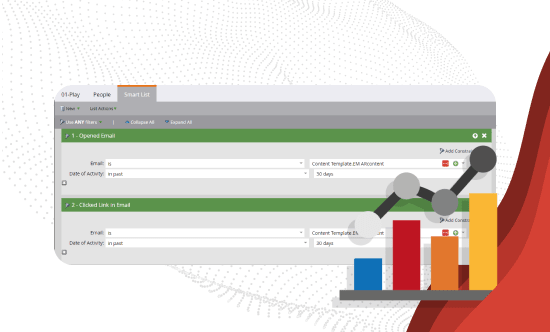Sender Address – Its Value To Email Marketing
Overview
Crowded inboxes and the ability to ‘unsubscribe’ without even opening an email make grabbing people’s attention increasingly challenging. Today, a quick glance at the sender address can be all it takes for an email to be opened or ignored. The sender name and address influence a recipient's trust and their decision to either open, delete, unsubscribe, or even mark your email as spam.
In this article, we explore the strategic role of the sender address and how it can significantly boost open rates. We also identify the key metrics that show the impact of a well-managed sender address, as well as outlining common mistakes – and best practices – that every marketing professional should know.
Open rate is one of the most important indicators for evaluating the effectiveness of an email marketing campaign, and the sender address plays a vital role in this area. Studies show that 64% of email recipients decide whether to open an email based on the sender. In other words, more than half of those who receive an email will look first at who is sending it before reading the subject line. This means that a trustworthy sender not only generates a positive first impression but also has the potential to greatly increase open rates. When receiving an email, recipients generally check three elements before deciding to open or ignore it: the sender, the subject line, and the short preview. If they do not recognize the sender address, the likelihood of deleting or marking the email as spam increases. On the other hand, if the sender is familiar, recipients are more likely to proceed to the subject line. For that reason, using a random sender address can undermine an entire campaign in a matter of seconds. To demonstrate the real-world impact of the sender address, A/B tests conducted in campaigns have shown that using a person’s name as the sender can increase open rates by up to 27.5% compared with using the company name. For example, a sender name and address like: Sara Smith – Kapturall achieves a much higher open rate than a generic address such as: Recipients associate a person’s name with direct, personal communication, which strengthens trust and reduces the perception of automation. Addresses like ‘no-reply@company.com’ often evoke negative responses in people because they signal that the message is impersonal and sent from a mailing list. So if you want to optimize the open rate of your emails, the sender must be carefully chosen and strategically named. Metrics confirm that the more personalized and recognizable the sender address, the greater the likelihood that recipients will open the message and engage with what’s inside. Choosing a sender address might seem trivial, but it’s actually a fundamental element for building trust and increasing open rates. Below are some of the most common mistakes: Avoiding these mistakes can dramatically improve the perception that recipients have of your emails, making it easier for your messages to be opened and read more frequently. To maximize open rates and the effectiveness of your email marketing campaigns, it’s essential to establish a strategic and trustworthy sender address. Here are some recommended best practices: In email marketing, every detail counts, and the sender address is one of the first decisions that can determine whether your message is read or ignored. A trustworthy, consistent, and approachable sender can transform the open rate and improve brand perception. Avoiding impersonal addresses and opting for real names helps personalize the recipient’s experience and prevents emails from being marked as spam. Implementing recommended practices, such as maintaining a consistent sender and conducting A/B tests, will optimize your email marketing campaigns. The key is to understand that each email is an opportunity for direct interaction, and when the sender inspires trust, that opportunity can transform into a valuable relationship between the brand and the customer. Discover how to optimize your digital marketing efforts by combining marketing automation platform Marketo with expertise from Kapturall. Get in touchKey metrics on sender address open rates
4 common mistakes when choosing a sender address
Best practices for creating an effective email sender
How to optimize the sender for better email marketing results
SIGN UP FOR OUR NEWSLETTER
Jose Tarzian
CEO and Co-founder of Kapturall
Jose is a seasoned digital marketing entrepreneur and CEO/co-founder of Kapturall, the largest Marketo partner in EMEA. Kapturall helps businesses maximize their marketing and sales investments with expert guidance, talent, processes, and best practices. With a team of members from 9 countries and 7 languages, Jose's international mindset enables Kapturall to deliver effective marketing solutions globally. He held leadership roles at Microsoft, Next International Venture Capital, and Telecom Argentina before founding Kapturall 10 years ago.



